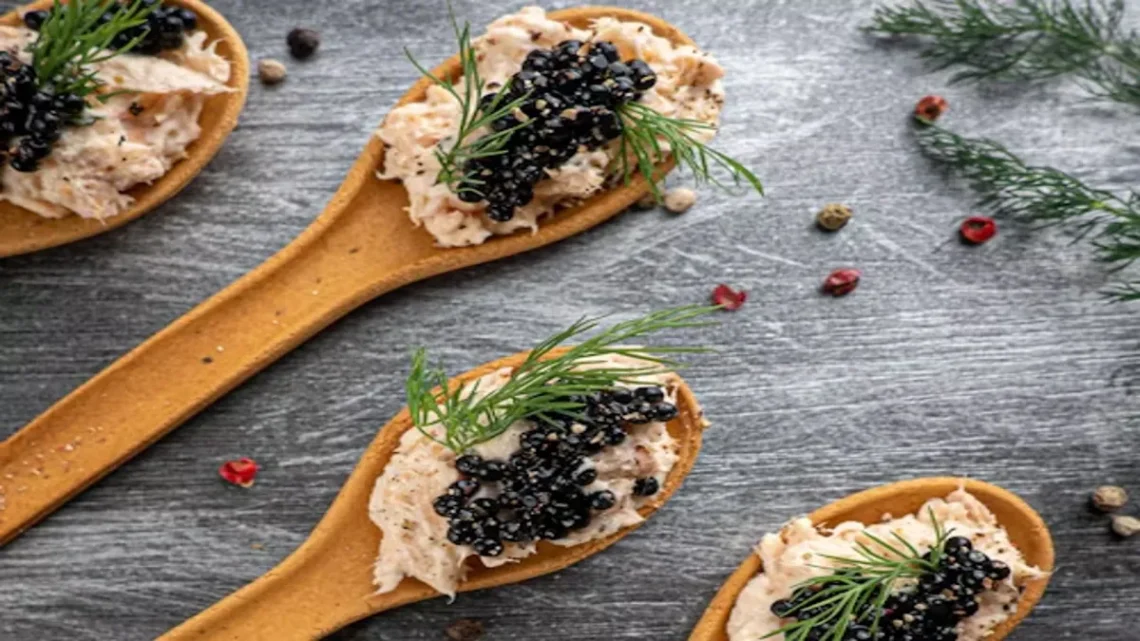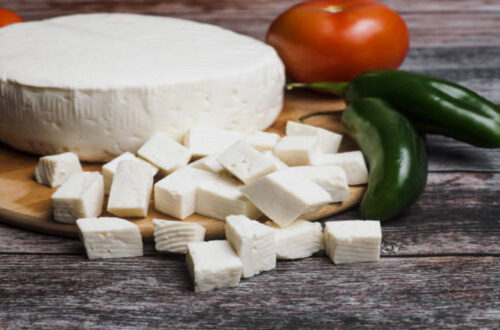Beluga caviar is the large, silvery-gray roe harvested from the beluga sturgeon and prized for its delicate texture, buttery umami and cultural cachet; this guide answers who makes it, why it costs so much, how to tell authentic from counterfeit, and practical advice on buying, storing and serving it. Below you’ll find a reporter’s account of the fish and its fisheries, a buyer’s checklist, tasting and pairing notes, a short table to compare major sturgeon roes, 3–4 field quotes and a practical, ethical framework for anyone who wants to enjoy beluga caviar responsibly.
Introduction — Why Beluga Still Matters
Beluga caviar occupies an unusual space between culinary indulgence and living-planet concern: as a luxury food it has inspired desire across continents; as the product of a long-lived, slow-maturing sturgeon it became an emblem of both scarcity and the consequences of human appetites. In restaurants it reads like a line on a menu and a promise of decadence; in conservation circles it is shorthand for overfishing and complex regulation. For a prospective buyer or an interested diner the central questions are straightforward: what exactly is beluga caviar, why is it priced as it is, how can one ensure authenticity and sustainability, and how should it be stored and served to honor its fragile texture? This article tackles those questions methodically, combining natural history with market practice and practical service advice so you can make informed and responsible decisions.
What Is Beluga Caviar?
Beluga caviar refers specifically to the eggs (roe) of the beluga sturgeon, a species historically known by the scientific name Huso huso. The eggs are among the largest and most lustrous of sturgeon roes, ranging in color from deep slate to pale silver, sometimes with a faint olive cast. What distinguishes beluga at first touch is a pop that is broad and gentle rather than sharp — a soft burst that releases a clean, buttery saline and long, savory afternotes. The mouthfeel is often described as creamy and lingering; the visual appeal is part of the experience as well, with beads that glisten under light and retain a subtle translucence.
A Brief Natural History
Beluga sturgeon are ancient animals — living fossils whose lineage stretches back tens of millions of years. They are anadromous in many parts of their historical range: born in rivers, maturing in brackish waters, sometimes venturing into open seas. Belugas are notable for their size and longevity: some individuals grow to several meters and can live many decades; crucially, they do not reproduce for many years. Females may take a decade or more to reach sexual maturity, meaning recovery from intense harvest pressures is slow. These life-history traits help explain both the roe’s rarity and the conservation challenges that surround it.
Why Beluga Commands High Prices
Several practical reasons underlie beluga’s high market value:
- Biological scarcity: long maturation periods and low reproductive rates mean supply is fundamentally limited.
- Historical overharvest: intense fishing in the 19th and 20th centuries drastically reduced wild populations.
- Regulatory constraints: many jurisdictions have strict quotas, temporary bans, or complete prohibitions on wild beluga harvests — all of which restrict supply.
- Perceived gastronomic superiority: the size, texture and flavor profile of beluga roe set it apart, and culinary traditions and prestige sustain demand.
- Counterfeiting and substitution risks: the complexity of supply chains and high price incentivize fraud, increasing market friction and the cost of verification.
Put simply: there are fewer fish, demand remains high, and trustworthy supply and certification carry a premium.
Farming Beluga: Aquaculture and Its Role
In response to collapsing wild populations and regulatory bans, aquaculture (fish farming) has grown as an alternative supply route. Farming allows producers to raise sturgeon in controlled conditions, manage breeding, and harvest roe without taking from wild stocks. Well-run aquaculture operations can reduce pressure on wild populations and create more predictable product flows; they also introduce new questions about feed, water quality, and the genetic management of stock. For example, some farms prioritize lineage and slow-growth methods to mimic wild flavor characteristics, while others optimize growth and yield. For buyers, aquaculture-produced beluga may present a more reliable ethical choice — provided farms maintain transparent, traceable practices and adhere to welfare and environmental standards.
Legal and Conservation Context
Because wild beluga sturgeon populations have been endangered or critically depleted in many areas, international and national regulators have stepped in. Trade in wild beluga caviar has been subject to significant restrictions under treaties and laws intended to protect the species and manage recovery. Licensing, permitting, and chain-of-custody documentation are common requirements for legal trade. A responsible buyer should ask for provenance and legal documentation: country of origin, wild or farmed designation, and any certifications or lab tests affirming species identity. When a product lacks clear provenance or documentation — or when sellers evade detailed questions — the prudent response is skepticism.
How Beluga Is Graded and Sold
Caviar grading traditionally considers bead size, firmness, color, flavor profile and the uniformity of the batch. Beluga beads tend to be large relative to many other sturgeon roe, and a premium lot will show uniform size, a glossy surface, and a delicate membrane that yields a satisfying but gentle pop. Flavor descriptors include “buttery,” “nutty,” “briny,” and “long finish.” Sellers may retail caviar in tins or jars, often in graduated sizes — from small tasting portions to imperial tins that accommodate multiple servings. Packaging should be airtight and refrigerated, and reputable merchants ship with cold-chain assurance.
A Short Comparison Table: Major Sturgeon Roes
| Roe Type | Typical Bead Size | Color Range | Flavor Profile | Typical Market Role |
|---|---|---|---|---|
| Beluga | Large | Pale silver, slate, light olive | Buttery, long, delicate pop | High-end, signature luxury |
| Ossetra (Osetra) | Medium-large | Golden brown to deep brown | Complex, nutty, briny | Versatile premium |
| Sevruga | Small | Dark gray to brown | Intense, briny, brisk | Flavorsome, often used as seasoning |
Authenticity and Fraud: How to Avoid Being Fooled
Because of its value, beluga caviar is frequently the target of substitution and fraud. Common issues include mislabeled species, dyed lower-value roe, or mixtures that dilute premium product. Practical checks for buyers:
- Ask for documentation: species identification, country of origin, harvest method, and any certifications.
- Inspect appearance and texture: beluga beads are large, glossy and have a soft pop; suspiciously uniform or unnaturally colored roe merits caution.
- Buy from reputable sellers with clear return policies and transparent sourcing.
- Consider lab verification for very high-value purchases: DNA testing can confirm species identity if provenance is in doubt.
A veteran caviar dealer once said, “If you can’t trace it to a single pond, a single boat, or a single farm, you probably don’t have something pristine.”
Tasting Beluga — What to Expect
Tasting beluga is a study in restraint. Use a small, shallow spoon of mother-of-pearl, bone or gold — avoid metal utensils that can impart flavors. Let a single bead rest on the tongue: note the initial saline burst, the creaminess that follows, and the long finish. Many aficionados describe the experience as “buttery and sea-kissed.” Pay attention to texture: a premium bead will be supple and clean, a compromised bead will feel chalky or overly soft. Tasting also depends on context — what you pair with the roe and how fresh it is will modify perceptions.
Serving Etiquette and Practical Tips
Serve chilled but not frozen. Typical serving temperature is just above refrigerator temperature, around 28–32°F (−2 to 0°C); do not freeze unless you intend to store for a prolonged period and even then be mindful that freezing alters texture. Small amounts go a long way — classic service portions are 10–20 grams per person for a tasting, 30–50 grams for a generous course. Tools and accompaniments:
- Use mother-of-pearl, bone, or inert utensils to avoid metallic off-notes.
- Keep chilled with crushed ice under the serving vessel (no direct contact with water).
- Offer neutral, unsalted crackers or blini, creme fraiche, lightly toasted bread or potato rösti.
- Provide gentle garnishes: chopped egg white, chives, lemon wedges, but keep them minimal to let the roe shine.
One chef summarized service plainly: “Caviar needs a quiet stage — don’t smother it in props.”
Pairings: Drinks and Accompaniments
Beluga pairs classically with chilled vodka and Champagne. The high acidity and effervescence of a brut Champagne cut through the roe’s richness; a clean, chilled vodka works by resetting the palate bead by bead. For wine, seek crisp, mineral-driven whites with good acidity — think Chablis, unwooded Riesling or a dry sparkling wine. Avoid heavy, oaky whites or tannic reds that will overwhelm the subtleties of the roe.
Storage and Shelf Life
Freshness matters. Once a tin or jar is opened, consume within 24–48 hours for ideal texture and flavor; refrigerate constantly and minimize oxygen exposure. Unopened, properly handled farmed beluga caviar can keep for weeks depending on processing and packaging; wild roe may have a shorter safe window. Again: always follow merchant guidance and check “best by” dates. Never taste an expired product; rancid lipids and off-odors indicate spoilage.
Health and Nutrition
Caviar is nutrient-dense: high in protein, omega-3 fatty acids, vitamins and trace minerals. A tasting portion provides beneficial long-chain polyunsaturated fats, vitamin B12 and selenium. However, caviar is also salty and calorically rich when consumed in quantity, so moderation is warranted. Pregnant people and immunocompromised individuals should consult medical advice about shellfish and seafood consumption; caviar is not typically cooked to sterilize pathogens.
The Ethics of Eating Beluga
Because beluga populations have been fragile, ethical consumption requires attention to provenance. Favor farmed sources with transparent, responsible fishing practices, and avoid products without credible legal documentation. Many consumers now believe that a luxury commodity must carry an ethical premium: paying more for traceable, sustainable supply chains supports both species recovery and local livelihoods. One conservationist put it succinctly: “Luxury that listens to the planet is the only luxury I can recommend.”
Price Range and What It Means
Price varies by provenance, whether wild or farmed, grade, and market dynamics. Top-grade beluga commands the highest prices, sometimes far above other sturgeon roes. But price alone is not a guarantee of quality: provenance, documentation and trustworthy retailer relationships matter just as much. When in doubt, small, controlled tastings from reputable purveyors offer a safer route to a satisfying purchase than speculative buys from unverified sellers.
Recipes and Simple Applications
Caviar benefits from minimal intervention. A few tasteful ideas:
- Caviar on blini with crème fraîche and chives: a classic that highlights texture and temperature contrast.
- Potato rösti topped with a quenelle of sour cream and a spoon of beluga: the potato’s warmth and crispness create a pleasing counterpoint.
- Simple egg and caviar: soft-scrambled eggs finished with a small spoon of beluga elevate breakfast into a fine-dining moment.
- Caviar as garnish: a small spoonful on seared scallops or delicate sashimi can add saline complexity.
Bulleted quick-recipe steps for blini service:
• Prepare small buckwheat blini and keep warm.
• Dollop a teaspoon of crème fraîche on each.
• Place 3–5 grams of beluga on top.
• Garnish with a light sprinkle of chives and serve immediately.
Fraud Cases and Industry Responses
The high cost incentivizes fraud. Industry responses include stricter documentation requirements, DNA testing for species verification, more discerning lab grading, and consumer education. Retailers and restaurants have a duty to verify provenance and to be transparent about wild versus farmed sources. If a seller avoids documentation or gives vague answers, treat that purchase as risky.
How to Buy — A Practical Checklist
- Verify the seller’s reputation and return policy.
- Request species and provenance documentation.
- Inspect packaging for seals and cold-chain assurances.
- Ask whether the product is wild or farmed, and whether any processing (salting, pasteurization) was applied.
- For significant purchases, consider independent verification or third-party lab testing.
- Start with a small quantity to test both flavor and seller trustworthiness.
Cultural Notes and Symbolism
Around the world, caviar has symbolized celebration and wealth — a ritual of conspicuous consumption turned into dining shorthand. Yet its story in recent decades has shown how culinary demand can reshape the status of a species and prompt new conservation paradigms. The evolving caviar market is a lesson in how luxury food systems must reconcile human desire with stewardship.
Common Misconceptions
- Misconception: All caviar is the same. Reality: species, processing, and provenance all create enormous variation.
- Misconception: Farmed caviar is inferior. Reality: well-managed farms can produce excellent, traceable product while relieving pressure on wild stocks.
- Misconception: More salt equals better caviar. Reality: balance and bead integrity matter more than salinity.
Closing Reflection — How to Approach Beluga Today
Beluga caviar remains one of gastronomy’s most evocative ingredients: its combination of texture, flavor and rarity creates moments that are both plainly sensory and socially meaningful. Today, enjoying beluga responsibly means buying with provenance in mind, serving with restraint, and understanding the biological and ethical context of the food. When handled with care — in kitchen practice, in conservation policy, and in consumer choice — beluga can be both a sublime treat and a prompt for better stewardship of marine life.
Conclusion — The Meaning Behind the Luxury
Beluga caviar is more than an opulent delicacy; it is a reflection of patience, craft, and responsibility. Each bead carries within it the story of a prehistoric fish, a fragile ecosystem, and the intersection of human appetite with nature’s limits. To enjoy beluga caviar today means understanding where it comes from, recognizing the stewardship it requires, and appreciating the generations of knowledge that protect it. The truest luxury of beluga caviar lies not only in its flavor but in the ethics of how it’s sourced, served, and shared. As one culinary historian remarked, “Every grain of caviar is a conversation between taste and time.” Respect for both defines the future of this rare and remarkable treasure.
Five FAQs about Beluga Caviar
1️⃣ What makes beluga caviar different from other types of caviar?
Beluga caviar comes from the Huso huso sturgeon, producing the largest and softest eggs with a rich, buttery flavor unmatched by other varieties. Ossetra and Sevruga caviars are smaller, more intense, and less creamy. The beluga’s long lifespan and rarity make its roe uniquely prized, contributing to its premium cost and luxury reputation.
2️⃣ Why is beluga caviar so expensive?
Its high price reflects biological scarcity, limited legal harvest, and slow reproduction cycles. Beluga sturgeon can take up to 20 years to produce roe, and strict international regulations control trade. The combination of rarity, meticulous handling, and limited supply pushes prices far beyond that of other sturgeon species.
3️⃣ How can consumers ensure they’re buying authentic and legal beluga caviar?
Always buy from reputable dealers with clear documentation of origin, species, and certification. Authentic beluga caviar will be labeled with precise production details and often carries a traceable code. Avoid sellers who cannot verify provenance or offer unusually low prices. True beluga has large, silvery-gray eggs with a delicate pop and subtle oceanic aroma.
4️⃣ What is the best way to serve beluga caviar?
Serve chilled, never frozen, in its original tin or a glass bowl over ice. Use non-metallic spoons — preferably mother-of-pearl — to preserve purity of taste. Pair with blini, unsalted crackers, or lightly toasted bread and complement with crème fraîche, Champagne, or chilled vodka. Simplicity enhances the caviar’s natural elegance.
5️⃣ Is it ethical to eat beluga caviar today?
Yes — if sourced responsibly. Wild beluga populations are endangered, but regulated aquaculture farms now produce sustainable caviar without harming wild stocks. Ethical consumption means choosing traceable, farmed beluga, supporting legal fisheries, and respecting environmental safeguards. The future of luxury dining depends on informed, conscientious choices.






